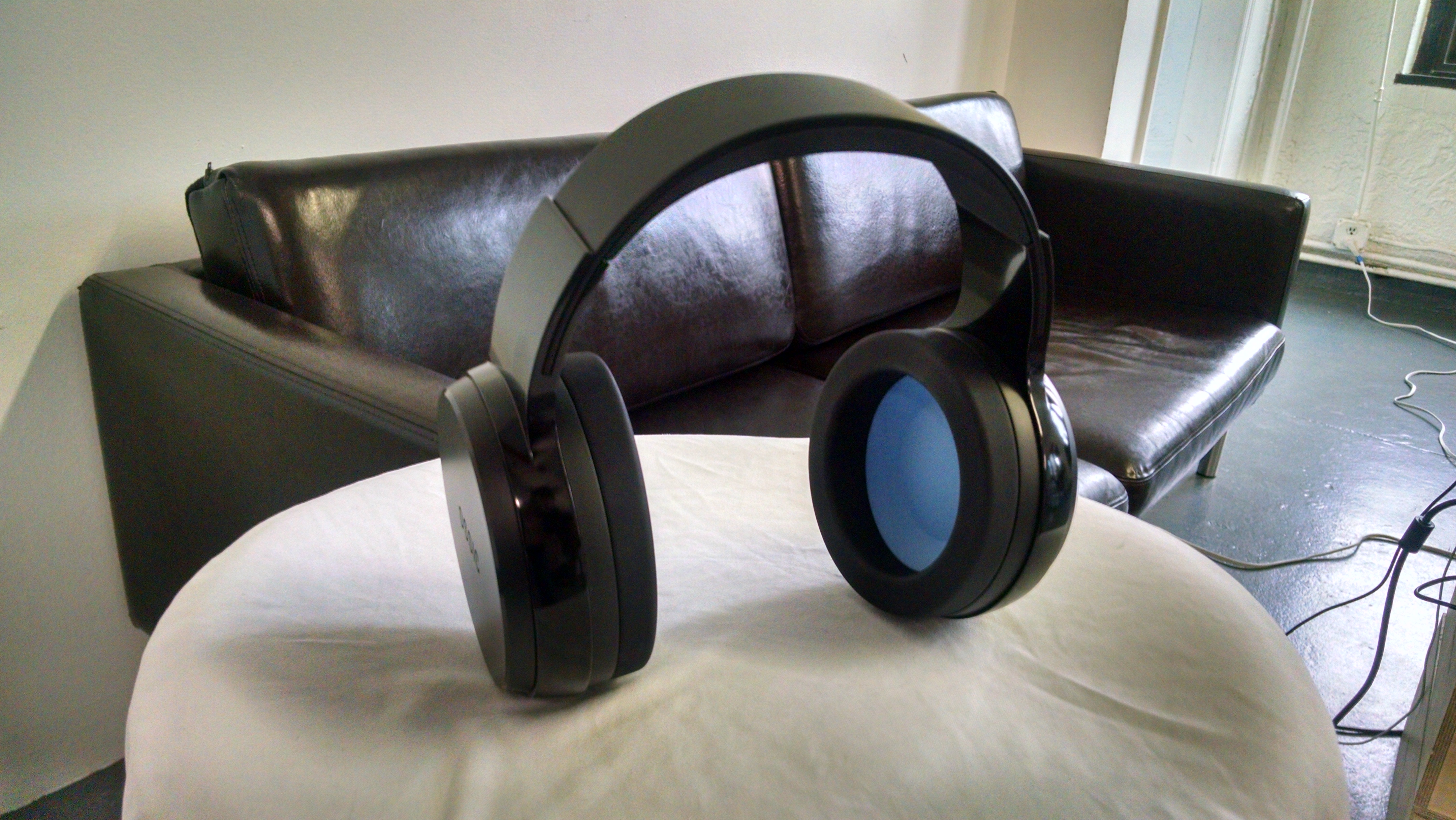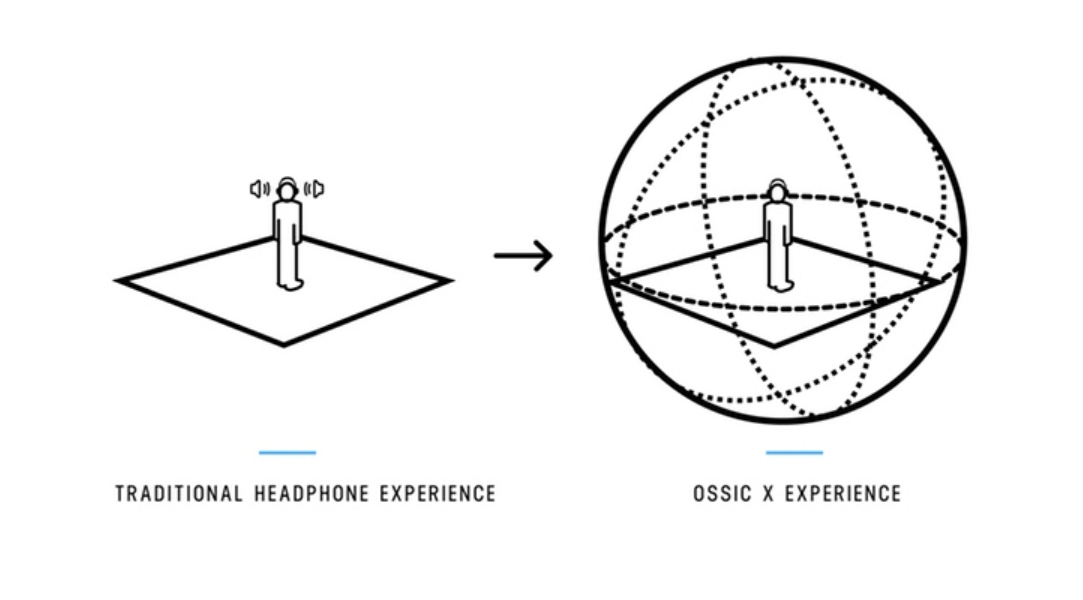Ossic Throws In The Towel, Won’t Deliver Headphones To Backers
Ossic announced that it is closing shop. The company burned through its Kickstarter funding during product development and failed to secure investors to put the Ossic X 3D headphones into mass production.
A little over two years ago, the small startup launched a Kickstarter campaign to fund the development of 3D audio headphones for increased immersion in VR experiences. The Ossic X headphones were designed to offer a 360-degree sound space that accounts for the listener's anatomy and head position to mimic the sounds of a 3D environment.
We had a chance to try an early prototype of the Ossic X headphones, and we were impressed by the experience. Unfortunately, we won’t likely get to try them again, and the people who helped fund the project won’t either. Over the weekend, Ossic issued a final update to its Kickstarter backers. The company announced that it ran out of money and is shutting down.
Ossic was originally seeking $100,000 to bring the Ossic X headphones to market, but the company pulled in far more money than that. The Ossic X campaign reached its goal within 2.5 hours and ultimately raked in $2.7 million (that’s more the Oculus secured for the Rift campaign) and pre-sold close to 10,000 units. Ossic credits the high-demand for part of the company’s failure. The company said that the Kickstarter stretch goals to support tablets and phones with micro-USB and Lightning connectors stretched the company’s resources too thin.
Ossic also went through several product design iterations, which burned through the company’s bankroll faster than it expected. Ossic produced five proof-of-concept units (one of which we tried), four engineering/factory builds, and one pilot production unit. Ossic said the final design ended up being much more expensive to produce than the original concept. The finalized product featured eight playback transducers (typical headphones have two), six microphones, and multiple internal sensors. The Ossic X also included a 32-core processor for compiling the sensors information onboard.
Ossic ultimately produced 250 production units and sent hardware to the 80 people who backed the $999 Innovator/Developer package, but it doesn’t have the funds to ramp up to full production. And the company burned through more than the $2.7 million (minus Kickstarter’s cut) it received from the campaign. Ossic said the crowdfunding money is only half of what it went through: The company also secured private seed funding.
“Over the last 18 months, we have explored a myriad of financing options, but given VR’s slow start and a number of high profile hardware startup failures, we have been unable to secure the investment required to proceed,” Ossic wrote in it’s final Kickstarter update. The company said that its employees even worked without salaries for the last six months and dumped personal savings to help bring the product to life, but it was all for naught. The company suggested that it would require approximately $2 million to produce the units for Kickstarter and after speaking with over 150 investors, none were willing to take on the project. Ossic even shopped around for another company to take over where it left off, but they were either uninterested or unable to take on the financial burden to complete the Ossic X production.
Get Tom's Hardware's best news and in-depth reviews, straight to your inbox.
Ossic’s management shuttered the company on May 19.
Kevin Carbotte is a contributing writer for Tom's Hardware who primarily covers VR and AR hardware. He has been writing for us for more than four years.
-
SkyBill40 I smell a class action for breach of contract coming, not that it'll matter all that much seeing they're going belly up.Reply -
stdragon The "perfect" is the enemy of the good.Reply
When you're short of funding, be sure that at the end of the day, get a product out ASAP to recoup the losses. Profits can further fund R&D for version 2.0 later -
Gam3r01 The short mention of VRs infancy I believe is a large portion of their issues.Reply
Excluding the whole mess of screwing over kickstarter backers, if VR was more available and established someone else would have taken it on/invested as well.
Being first does not make you the best, especially if you never make it at all. -
SkyBill40 Reply20989210 said:Being first does not make you the best, especially if you never make it at all.
Or, if you make what amounts to a questionable effort in the first place and then squander all the capital put towards it and produce next to nothing to show for it. Such is the case here. -
Gam3r01 Reply20989230 said:20989210 said:Being first does not make you the best, especially if you never make it at all.
Or, if you make what amounts to a questionable effort in the first place and then squander all the capital put towards it and produce next to nothing to show for it. Such is the case here.
Thats the other issue, when someone/some company has an idea but no idea how it will actually come together. -
casey_souder You forgot the $3.2 million that was also raised through Indiegogo and the undisclosed amount that they received from people that pre-ordered the headphones directly through Ossic's website.Reply -
cryoburner It's bizarre that they got as far as having everything designed, and even delivering a handful of early units, and yet still managed to fail so hard. I can see why they had trouble securing more funding though. At least for VR, this concept actually seems rather redundant. There's no need for the headphones to track their own position if the user is wearing a VR headset that is already doing just that. A 3D microphone array with 6 mics also seems fairly pointless when VR headsets include microphones as well. And any audio processing can be performed on the PC, or whatever other host device is running the simulation, so having a "32-core processor" onboard seems unnecessary for that.Reply
And outside of VR, these headphones would basically just be simulating a surround speaker setup in headphone form. For games or movies where you are likely to encounter positional audio, a person's head is going to be mostly stationary anyway, since they're looking forward at a screen, so again, the tracking might not be of much use. And unless you need headphones to avoid disturbing others, this doesn't really do much that a surround speaker setup won't do, and isn't going to recreate low-frequency sounds as well as a speaker system with a proper subwoofer. I guess you could have an approximation of a surround setup while on the go, but these don't appear to be the most portable headphones either.
About the only advantage I can see over a pair of stereo studio monitor headphones for VR is that having multiple speakers inside would allow the sound to be affected by the unique shape of one's ears, potentially making the positioning feel slightly more accurate than sound delivered directly into the ear canal. Even four speakers per ear still won't provide completely accurate positioning though. Plus, there might need to be explicit support for the headphones in any VR software you use, otherwise the software may only output a stereo signal with simulated 3D positioning effects already applied, messing up the headset's own positioning.
I'd be interested in seeing a summary of where these millions of dollars actually went to though. Someone obviously made a lot of money out of the endeavor, even if the company is claiming that some of their employees were working "without salaries" in recent months. It's certainly easy for someone to work without pay if they already pocketed a large some of money for their services over the course of development.
Of course, people should also be a little more careful about throwing money at a company that proudly proclaimed in their crowdfunding campaign that they "started in a home living room" just a year and a half prior. The same goes for all the tech sites reporting on campaigns like this. This was a newly-formed company that never actually delivered a product before, and it should really be pointed out in articles like these that there is the possibility that a product won't get delivered, and that those thinking they're making a purchase could potentially be out hundreds of dollars.
-
BaRoMeTrIc Reply20989120 said:I smell a class action for breach of contract coming, not that it'll matter all that much seeing they're going belly up.
Kickstarter is a crown-sourced venture capitalist site. You are investing in products that are theoretical, prototypes, or in early production. You are taking a risk that the product may never come to market. Successfully suing a company that failed to launch a product is unlikely, It's not like they had a manufacturing agreement with you. You are investing in a startup. Not investing in a full fledged product ready to go to market.
-
Brendon Gaige I was a backer, and Ossic always phrased the funding as pre-orders, not as capitalistic investments. While, technically, you are correct, that was not the way Ossic publicized and marketed the project. They also never once uttered a word of concern about not being able to deliver the final product, until it was too late and they closed shop. They also spent over $2m of their funds on marketing and trade shows... THAT is why people are upset.Reply -
daboogie ReplyThey also spent over $2m of their funds on marketing and trade shows... THAT is why people are upset.
Incidentally, they said that they needed additional $2m funding to complete mass production of units.


